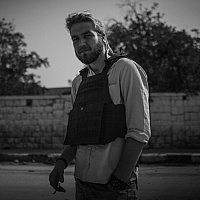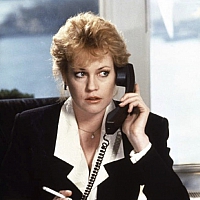
A boy in the front row of the Friday demonstration looking up to the spokesman, jumping and chanting revolutionary songs. February 2013 © Jan-Niklas Kniewel
Who are you Jan-Niklas Kniewel ?
I'm a young German freelance writer and photographer focussed on human rights, conflicts and social issues especially in the Islamic world. But actually, the topics of my work are more important than my person, so I would prefer to go straight forward.
Why did you become a photographer ?
I became a journalist to make the human fates behind the cold numbers and statistics visible. And in order to document injustice. Given the work of journalists, people can never say that they were simply not aware of what is happening and may not excuse themselves from action by saying „I did not know“ - Journalists show them day by day what is happening out there and by presenting stories that cannot be ignored society may be taken into political responsibility. Moreover to present a detailed and critical view on events, since there are too many journalists who confuse spinelessness with objectivity.
.jpg)
Tumultous conditions at the food distribution center of the UN World Food Programme, as there is too much demand for the limited resources.
February 2013 © Jan-Niklas Kniewel
.jpg)
A first aid personnel of the Civil Defense Force at the center of impact of a barrel bomb.
October 2014 © Jan-Niklas Kniewel
Tell us more about your series in Syria. When & why have you been there ? What did you wanna say/show with these pictures ?
I have traveled to Syria three times between February 2013 and October 2014 and covered the situation inter alia in long reports for the weekend edition of the German newspaper "taz". I am not only a photographer as a big part of my work is also dedicated to the written story behind the pictures so I guess my written work is difficult to separate from my photographs.
In the Syrian War, we see once again the absolute betrayal of the West at those people who stand up to contend for a little bit more freedom. Once again we see 'interests' winning against universal principles. A betrayal that took place throughout the whole Arab world.
Syria became a geostrategic chess game in order to make the nuclear deal with the Iranian regime. And in consequence we're sacrificing the Syrian civil society. Today, the country is being torn apart by jihadists on one side and Assad and his allies on the other side. Those who are fighting for a better Syria are marginalized and the hope is almost dead. We abandoned them.
But in the midst of suffering, destruction and death, there is still hope: People like those of the Civil Defense Force. Men and women risking their lives trying to save people from Assad's barrel bombs day after day. Teenagers, who are training to become teachers to avoid a whole generation going down the drain. Concernig the ignorance towards the victims we need to show over and over again, that behind the cold numbers of victims, there are people like you and me.
.jpg)
Men of the Civil Defense Force in the early morning waiting for the next mission.
October 2014 © Jan-Niklas Kniewel
.jpg)
A civilian dying after being injured by an air strike of the Syrian army.
February 2013 © Jan-Niklas Kniewel
.jpg)
A fighter in the midst of an almost completely destroyed neighbourhood.
February 2013 © Jan-Niklas Kniewel
.jpg)
Men of the Civil Defense Force checking the sky for the helicopters that carry the deadly barrel bombs.
Waal, the paramedic standing on the left, was killed by a bomb the day after the photo was shot.
October 2014 © Jan-Niklas Kniewel
Is there a "crazy part" needed to become a photoreporter? Are you afraid of death?
A "crazy part" would mean, that you'll get killed very quickly. Reason, caution and patience are needed. Furthermore local people you know and who can be trusted and detailed knowledge about the culture, society and of the conflict itself. It is important to be calm, to treat the people just as empathetic as you yourself would want to be treated. All this minimizes the risk of death extremely. In additon it's simple for me to deal with the risk: When I'm working on a story, my own death is entirely in the background. I don't think about it.
.jpg)
A man is taking his last things from his destroyed house.
September 2014 © Jan-Niklas Kniewel
And what camera are you working with?
I don't care about fancy equipment. My current camera is 10 years old - It's damn tough and the resolution is high enough to print the images in any medium. Nothing else matters.
How do you see tomorrow professionally? New projects to come?
Who are the photographers who inspire(d) you?
Paolo Pellegrin, Stanley Greene, James Nachtwey – but even more important is the written work of journalists such as Marie Colvin, Paul Salopek and dozens of others. Like I said: I don't like to separate photographic and written journalism, the best journalistic pieces are those, who are a symbiosis of writing and photography.
Interviewed by Emilie Lemoine


